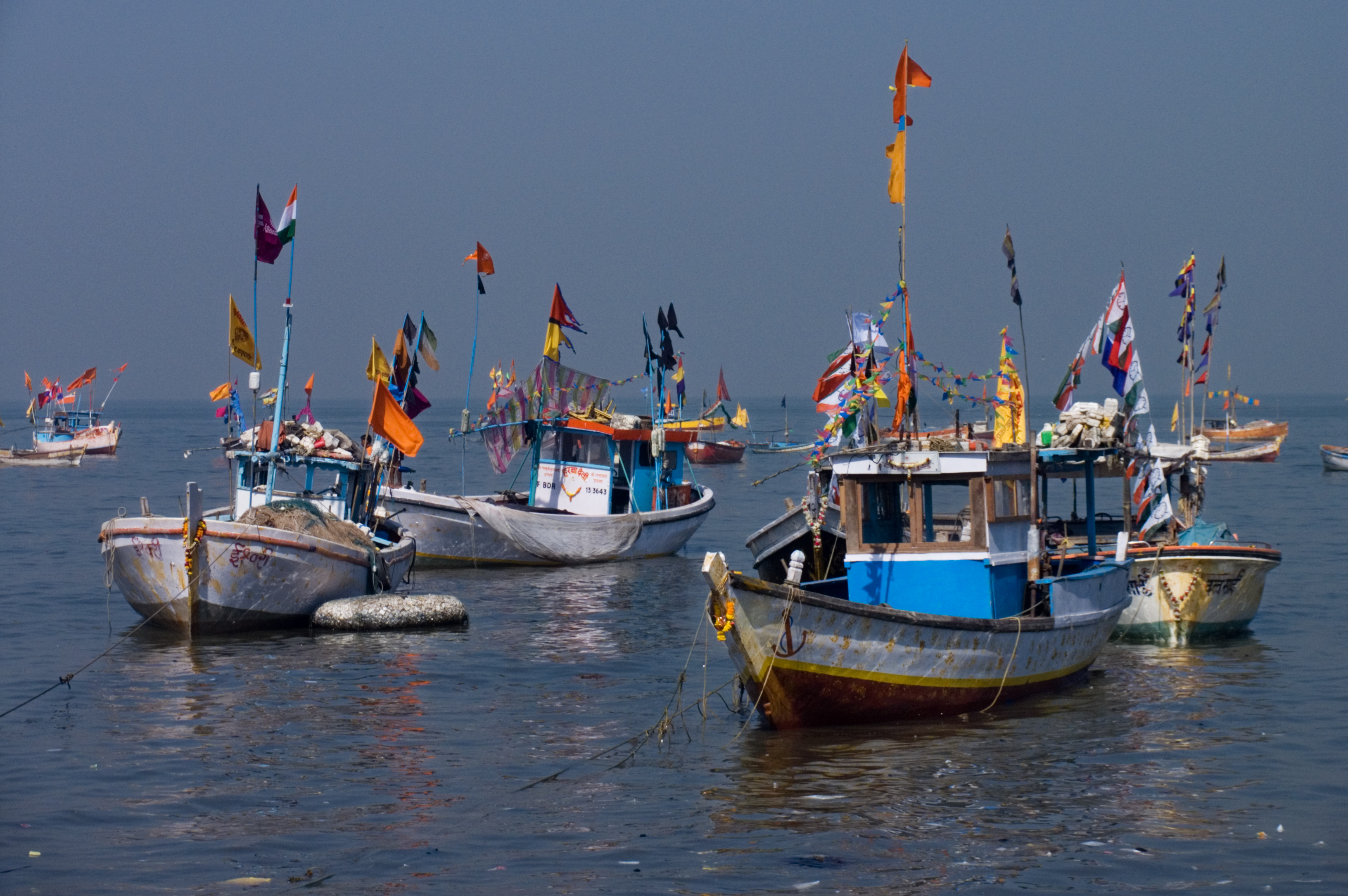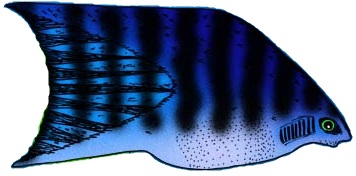|
False Osman
The false osman (''Schizopygopsis stolickai'') is an Asian cyprinid freshwater fish living in the highlands of Afghanistan, southwestern China, Iran, northern India, Kyrgyzstan, Pakistan and Tajikistan. Young individuals and small adults live in shallow streams and pools, while large adults inhabit the main river and lakes. It grows to in total length Fish measurement is the measuring of individual fish and various parts of their anatomies, for data used in many areas of ichthyology, including taxonomy and fishery biology. Overall length Standard length (SL) is the length of a fish measured f .... Etymology The fish is named in honor of paleontologist Ferdinand Stoliczka (1838–1874), who collected the type specimen. References Schizopygopsis Fish of Afghanistan Freshwater fish of China Freshwater fish of India Fish of Iran Fish of Pakistan Fauna of Tibet Taxa named by Franz Steindachner Fish described in 1866 {{Cyprininae-stub ... [...More Info...] [...Related Items...] OR: [Wikipedia] [Google] [Baidu] |
Franz Steindachner
Franz Steindachner (11 November 1834 in Vienna – 10 December 1919 in Vienna) was an Austrian zoologist, ichthyologist, and herpetologist. He published over 200 papers on fishes and over 50 papers on reptiles and amphibians. Steindachner described hundreds of new species of fish and dozens of new amphibians and reptiles. At least seven species of reptile have been named after him. Work and career Being interested in natural history, Steindachner took up the study of fossil fishes on the recommendation of his friend Eduard Suess (1831–1914). In 1860 he was appointed to the position of director of the fish collection at the Natural History Museum, Vienna, a position which had remained vacant since the death of Johann Jakob Heckel (1790–1857). (in German). Steindachner's reputation as an ichthyologist grew, and in 1868 he was invited by Louis Agassiz (1807–1873) to accept a position at the Museum of Comparative Zoology at Harvard University. Steindachner took part i ... [...More Info...] [...Related Items...] OR: [Wikipedia] [Google] [Baidu] |
Solomon Herzenstein
Solomon Markovich Herzenstein (; 1854 – August 7, 1894) was a Russian zoologist. Biography Herzenstein received a degree in natural sciences and mathematics from St. Petersburg University and was appointed as the custodian of the Zoological Museum of the Imperial Academy of Science in 1879 or 1880. He also supervised practical training at the University for Women. In 1880, 1884, and 1887, he was commissioned to travel to the Murman Coast of the Kola Peninsula to study the mollusks and fishes there. His work, "Materialy k Faunye Murmanskavo Berega i Byelavo Morya," which was published in the ''Trudy'' of the in 1885, became a standard reference. He co-wrote ''Zamyetki po Ikhtologii Basseina Ryeki Amura'' (1887) and ''Nauchnye Rezultaty Puteshestvi Przevalskavo'' (1888–91) with N. L. Varpakhovski. He also wrote ''Ryby'' (St. Petersburg, 1888-91), and published "Ichthyologische Bemerkungen" in the ' (1890-92). Species described * '' Acanthogobio guentheri'' (Herzenstein, ... [...More Info...] [...Related Items...] OR: [Wikipedia] [Google] [Baidu] |
Cyprinid
Cyprinidae is a Family (biology), family of freshwater fish commonly called the carp or minnow family, including the carps, the true minnows, and their relatives the barb (fish), barbs and barbel (fish), barbels, among others. Cyprinidae is the largest and most diverse fish family, and the largest vertebrate, vertebrate animal family overall, with about 1,780 species divided into 166 valid genus, genera. Cyprinids range from about in size to the giant barb (''Catlocarpio siamensis''). By genus and species count, the family makes up more than two-thirds of the ostariophysian order Cypriniformes. The family name is derived from the Greek word ( 'carp'). Biology and ecology Cyprinids are stomachless, or ''agastric'', fish with toothless jaws. Even so, food can be effectively chewed by the gill rakers of the specialized last gill bow. These pharyngeal teeth allow the fish to make chewing motions against a chewing plate formed by a Process (anatomy), bony process of the skull. The ... [...More Info...] [...Related Items...] OR: [Wikipedia] [Google] [Baidu] |
Kyrgyzstan
Kyrgyzstan, officially the Kyrgyz Republic, is a landlocked country in Central Asia lying in the Tian Shan and Pamir Mountains, Pamir mountain ranges. Bishkek is the Capital city, capital and List of cities in Kyrgyzstan, largest city. Kyrgyzstan is bordered by Kazakhstan to the Kazakhstan–Kyrgyzstan border, north, Uzbekistan to the Kyrgyzstan–Uzbekistan border, west, Tajikistan to the Kyrgyzstan–Tajikistan border, south, and China to the China–Kyrgyzstan border, east and southeast. Ethnic Kyrgyz people, Kyrgyz make up the majority of the country's over 7 million people, followed by significant minorities of Uzbeks and Russians. Kyrgyzstan's history spans a variety of cultures and empires. Although geographically isolated by its highly mountainous terrain, Kyrgyzstan has been at the crossroads of several great civilizations as part of the Silk Road along with other commercial routes. Inhabited by a succession of tribes and clans, Kyrgyzstan has periodically fallen unde ... [...More Info...] [...Related Items...] OR: [Wikipedia] [Google] [Baidu] |
Tajikistan
Tajikistan, officially the Republic of Tajikistan, is a landlocked country in Central Asia. Dushanbe is the capital city, capital and most populous city. Tajikistan borders Afghanistan to the Afghanistan–Tajikistan border, south, Uzbekistan to the Tajikistan–Uzbekistan border, west, Kyrgyzstan to the Kyrgyzstan–Tajikistan border, north, and China to the China–Tajikistan border, east. It is separated from Pakistan by Afghanistan's Wakhan Corridor. It has a population of over 10.7 million people. The territory was previously home to cultures of the Neolithic and the Bronze Age, including the Bactria–Margiana Archaeological Complex, Oxus civilization in west, with the Indo-Iranians arriving during the Andronovo culture. Parts of country were part of the Sogdia, Sogdian and Bactria, Bactrian civilizations, and was ruled by those including the Achaemenid Empire, Achaemenids, Alexander the Great, the Greco-Bactrian Kingdom, Greco-Bactrians, the Kushan Empire, Kushans, the Kid ... [...More Info...] [...Related Items...] OR: [Wikipedia] [Google] [Baidu] |
Total Length
Fish measurement is the measuring of individual fish and various parts of their anatomies, for data used in many areas of ichthyology, including taxonomy and fishery biology. Overall length Standard length (SL) is the length of a fish measured from the tip of the snout to the posterior end of the last vertebra or to the posterior end of the midlateral portion of the hypural plate. This measurement excludes the length of the caudal (tail) fin. Total length (TL) is the length of a fish measured from the tip of the snout to the tip of the longer lobe of the caudal fin, usually measured with the lobes compressed along the midline. It is a straight-line measure, not measured over the curve of the body. Standard length measurements are used with Teleostei (most bony fish), while total length measurements are used with Myxini (hagfish), Petromyzontiformes ( lampreys) and usually Elasmobranchii (shark Sharks are a group of elasmobranch cartilaginous fish characterized by a ... [...More Info...] [...Related Items...] OR: [Wikipedia] [Google] [Baidu] |
Ferdinand Stoliczka
Ferdinand Stoliczka (Czech language, Czech written Stolička, 7 June 1838 – 19 June 1874) was a Moravian palaeontologist who worked in India on paleontology, geology and various aspects of zoology, including ornithology, malacology, and herpetology. He died of high altitude sickness in Murgo during an expedition across the Himalayas. Early life Stoliczka was born at the lodge ''Zámeček'' near Kroměříž in Moravia. Stoliczka, whose father was a forester who took care of the estate of the Archbishop of Olomouc, studied at a German Secondary school in Kroměříž. Although Stoliczka published 79 articles from 1859 to 1875, he never wrote anything in Czech. It is believed that he spoke German at home. In his Calcutta years he was an important figure in the German-speaking community there. Stoliczka studied geology and palaeontology at Prague and the University of Vienna under Professor Eduard Suess and Dr Rudolf Hoernes. He graduated with a Ph D from the University of Tüb ... [...More Info...] [...Related Items...] OR: [Wikipedia] [Google] [Baidu] |
Schizopygopsis
''Schizopygopsis'' is a genus of cyprinid fish. Most species are endemic to river basins in the Himalayas and Qinghai–Tibet Plateau of China, but ''S. stoliczkai'' extends into the highlands of Afghanistan, Iran, northern India, Kyrgyzstan, Pakistan and Tajikistan.Delin Qi, Songchang Guo, Yan Chao, Qinghui Kong, Changzhong Li, Mingzhe Xia, Baosheng Xie and Kai Zhao (2015). The biogeography and phylogeny of schizothoracine fishes (Schizopygopsis) in the Qinghai-Tibetan Plateau. Zoologica Scripta 44(5). ''S. younghusbandi'' is up to almost in total length, but the remaining species generally only reach about two-thirds of that size. ''Schizopygopsis'' have a horny sheath on the lower jaw and spoon-shaped teeth that they use to scrape off periphyton and algae Algae ( , ; : alga ) is an informal term for any organisms of a large and diverse group of photosynthesis, photosynthetic organisms that are not plants, and includes species from multiple distinct clades. Such org ... [...More Info...] [...Related Items...] OR: [Wikipedia] [Google] [Baidu] |
Fish Of Afghanistan
A fish (: fish or fishes) is an aquatic, anamniotic, gill-bearing vertebrate animal with swimming fins and a hard skull, but lacking limbs with digits. Fish can be grouped into the more basal jawless fish and the more common jawed fish, the latter including all living cartilaginous and bony fish, as well as the extinct placoderms and acanthodians. In a break to the long tradition of grouping all fish into a single class (Pisces), modern phylogenetics views fish as a paraphyletic group. Most fish are cold-blooded, their body temperature varying with the surrounding water, though some large active swimmers like white shark and tuna can hold a higher core temperature. Many fish can communicate acoustically with each other, such as during courtship displays. The study of fish is known as ichthyology. The earliest fish appeared during the Cambrian as small filter feeders; they continued to evolve through the Paleozoic, diversifying into many forms. The earliest fish wit ... [...More Info...] [...Related Items...] OR: [Wikipedia] [Google] [Baidu] |
Freshwater Fish Of China
Fresh water or freshwater is any naturally occurring liquid or frozen water containing low concentrations of dissolved salts and other total dissolved solids. The term excludes seawater and brackish water, but it does include non-salty mineral-rich waters, such as chalybeate springs. Fresh water may encompass frozen and meltwater in ice sheets, ice caps, glaciers, snowfields and icebergs, natural precipitations such as rainfall, snowfall, hail/ sleet and graupel, and surface runoffs that form inland bodies of water such as wetlands, ponds, lakes, rivers, streams, as well as groundwater contained in aquifers, subterranean rivers and lakes. Water is critical to the survival of all living organisms. Many organisms can thrive on salt water, but the great majority of vascular plants and most insects, amphibians, reptiles, mammals and birds need fresh water to survive. Fresh water is the water resource that is of the most and immediate use to humans. Fresh water is not always po ... [...More Info...] [...Related Items...] OR: [Wikipedia] [Google] [Baidu] |
Freshwater Fish Of India
Fishing in India is a major sector within the economy of India contributing 1.07% of its total Gross domestic product, GDP. The fishing sector in India supports the livelihood of over 28 million people in the country, especially within the marginalized and vulnerable communities. India is the third largest fish producing country in the world accounting for 7.96% of the global production and second largest producer of fish through aquaculture, after China. The total fish production during the 2020-21 is estimated at 14.73 million metric tonnes. According to the National Fisheries Development Board the Fisheries Industry generates an export earnings of Rs 334.41 billion. Centrally sponsored schemes will increase exports by Rs 1 lakh crore in FY25. 65,000 fishermen have been trained under these schemes from 2017 to 2020. Freshwater fishing consists of 55% of total fish production. According to the Ministry of Fisheries, Animal Husbandry and Dairying, Ministry of Fisheries, Anim ... [...More Info...] [...Related Items...] OR: [Wikipedia] [Google] [Baidu] |
Fish Of Iran
A fish (: fish or fishes) is an aquatic animal, aquatic, Anamniotes, anamniotic, gill-bearing vertebrate animal with swimming fish fin, fins and craniate, a hard skull, but lacking limb (anatomy), limbs with digit (anatomy), digits. Fish can be grouped into the more basal (phylogenetics), basal jawless fish and the more common jawed fish, the latter including all extant taxon, living cartilaginous fish, cartilaginous and bony fish, as well as the extinct placoderms and acanthodians. In a break to the long tradition of grouping all fish into a single Class (biology), class (Pisces), modern phylogenetics views fish as a paraphyletic group. Most fish are ectotherm, cold-blooded, their body temperature varying with the surrounding water, though some large nekton, active swimmers like white shark and tuna can hold a higher core temperature. Many fish can communication in aquatic animals#Acoustic, communicate acoustically with each other, such as during courtship displays. The stud ... [...More Info...] [...Related Items...] OR: [Wikipedia] [Google] [Baidu] |






